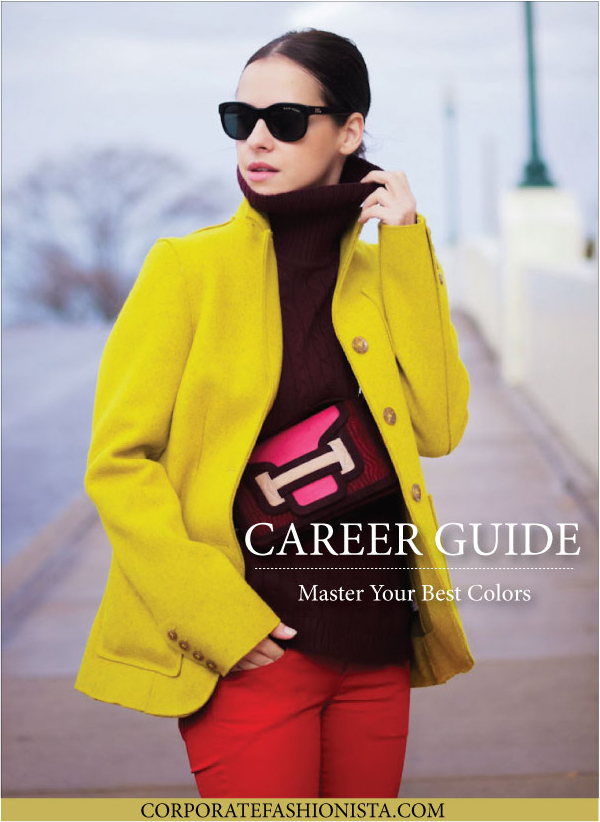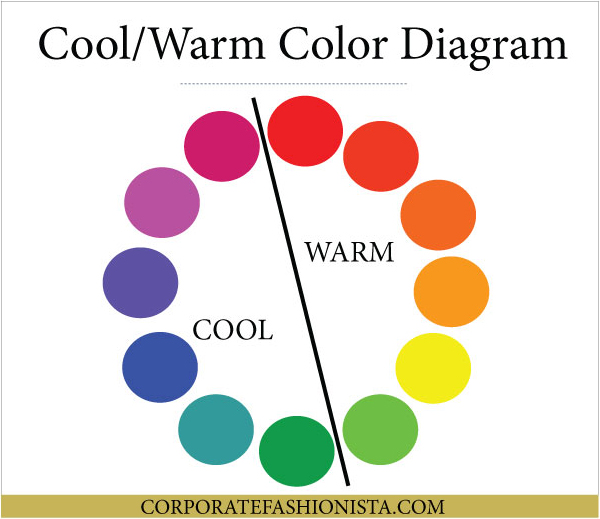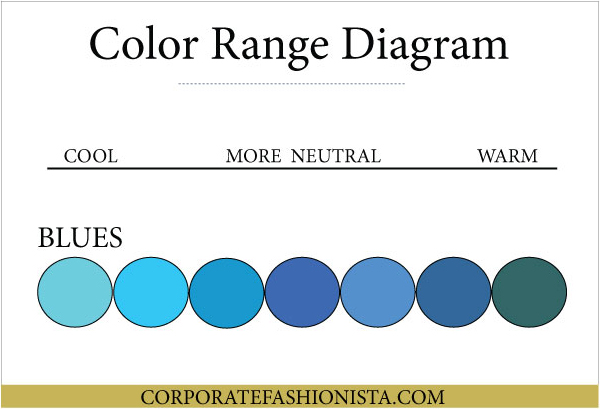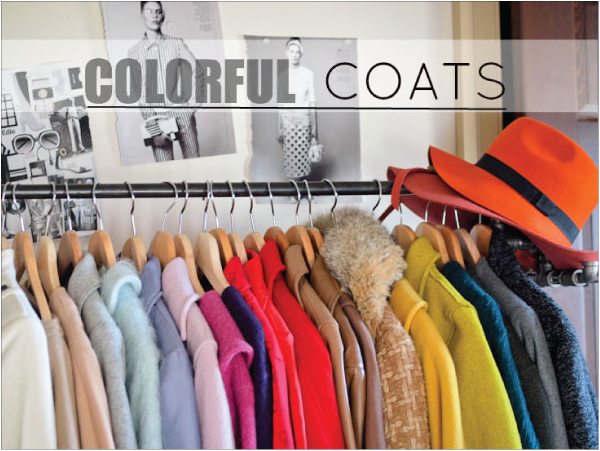
Meet fashion blogger Veronica Popoiacu of Bittersweet Colours.
She has an extraordinary talent for styling colorful outfits. Her creative monochromatic, colorblocked and mixed-print looks have made her famous on the fashion scene. Veronica’s keen eye for selecting colors that flatter her is the foundation to her success allowing her to feel confident to not hold back in any way with her mixing and matching skills.
As a stylist, I often find new clients unnecessarily limit their color choices based on outdated or misinformation.
Color is a powerful and persuasive form of nonverbal communication. It encourages a visceral reaction in both the wearer and the observer. And when worn well, as you’ve heard from me countless times, color can benefit you on the job.
Ready for my shocking reversal of a ‘dyed (pun totally intended!) in the wool’, fashion rule? I believe you can wear any color. The trick is simply finding the ideal hues for your skin tone. For example, sky blue is very different from turquoise blue, but while both are blue, the former flatters one skin tone, while the latter flatters another.
Of course, there’s a sometimes complicated art and science to finding your best colors. The next few steps will simplify the process.
Certainly, if you wish to start with an overview on color theory, I recommend checking out Visual Arts Teacher Frank Curkovic’s slideshow below. Otherwise, move forward to Step 1.
STEP 1: Cool or Warm
I find the traditional seasonal (spring, summer, winter and autumn) color analysis to be overwhelming and, consequently, I prefer to focus on two color categories – cool and warm. See diagram below.
There are many different shades of skin, but there are only two undertones. Lucky for us, it’s the undertone that counts, making this process much simpler. In theory, if your complexion has a cool undertone, then you should wear cool colors and if your complexion has a warm undertone, then you should wear warm colors. There are some lucky few that have a neutral undertone and can wear both cool and warm colors, but for this exercise I’m going to keep it straightforward and encourage you to select one category.

Here are two quick tests to determine whether your skin’s got a cool or warm undertone.
The Vein Test
In natural light (during the day, stand by an open window) make a fist and examine your inner wrist. What color are your veins?
Blue veins = Cool undertone
Green veins* = Warm undertone
*Note: Warm undertone – your veins aren’t actually green. They simply look it, because you’re seeing them through yellow-toned skin (yellow + blue = green.).
The Paper Test
Stand 2-3 feet away from a mirror (with natural light); place a sheet of white paper below your chin. Close your eyes for a few seconds now open them. What did you see first?
Your Face = Cool undertone
White paper = Warm undertone
Once you discover your skin’s undertone, then refer to any cool/warm color chart for a general ‘best colors’ color guide like the one displayed above.
STEP 2: Color Range
But wait!
Have you ever wished to paint the walls in your home white, but had a hard time choosing? The vast selection of white paint is mind-boggling, isn’t it? Or, what about red lipstick or nail polish? The options are endless. My point is, contrary to the general cool/warm color chart, I believe that if you are cool-toned, there is a red for you or if you are warm-toned, there is a blue for you.
I think the general cool/warm color theory in Step 1 limits your color options as well and it gets in your way to becoming your very own color master.
So, what’s next?
Now that you know whether your skin’s undertone is either cool or warm, the next step is to discover which variations within a particular color range are the most flattering to your skin tone/complexion. For example, the color diagram below features a range of blue colors that flatter cool skin tones to the left and those that flatter warm skin tones best to the right giving you more color options. In other words, there are cool-blues and there are warm-blues. Every color, including a neutral hue, has its own range where you will be able to discover multiple hues that flatter you.

STEP 3: Experiment
Ultimately, your best color tones will enliven your complexion (perfect for those late nights at the office) as well as brighten your eyes and whiten your teeth. It’s most important for each of us to remember, if we don’t want to limit ourselves color-wise, we don’t have to. Color is a wonderful way to connect and it’s perfectly okay to experiment, in fact, it’s well worth it.
By the way, check out this sneak peak inside Veronica’s colorful coat closet. Let the inspiration begin!

What are your go-to colors? Are there any colors you have avoided that you, now, wish to give a try?
Image credit: (Top & Bottom) Veronica Popoiacu of Bittersweet Colours. Graphics by Kristina Moore for Corporate Fashionista, excluding coats image.

My go-to colors are black and blue. I don’t wear yellow that much so I think I’m going to give it a try. I will definitely test myself after this but I think I’m a cool undertone. Thanks for sharing this information!